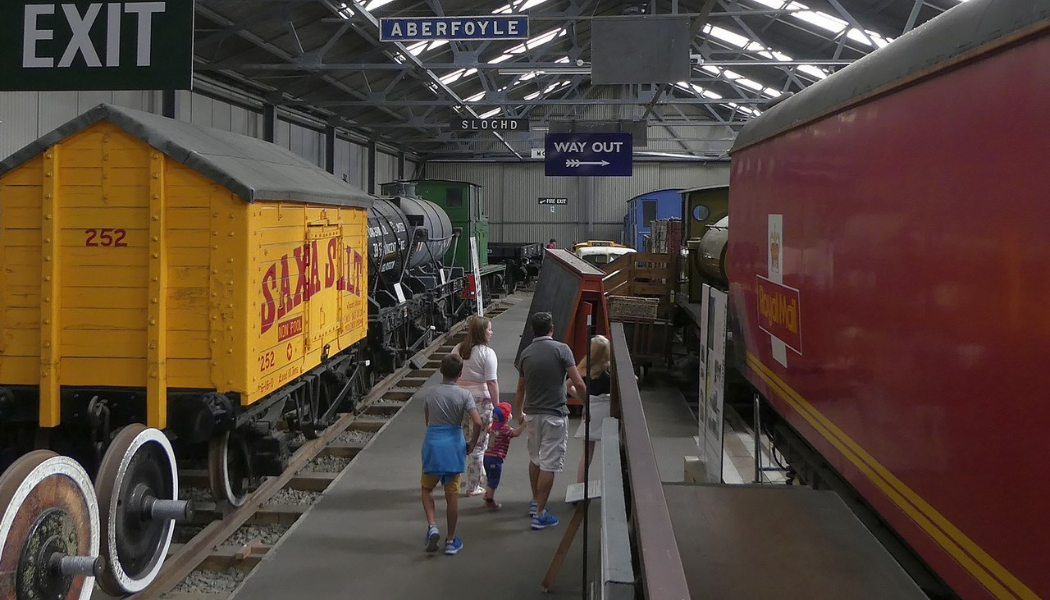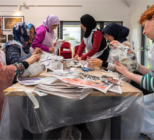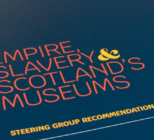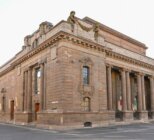A total of 20 museums in Scotland have been awarded a share of £573,985 by the national development body Museums Galleries Scotland (MGS), via support from the Scottish Government.
The museums have been funded through the second round of the Resilience Fund, in support of new approaches to energy efficiency and income generation.
Projects supported include the installation of a solar array at Almond Valley, a museum and working watermill in West Lothian, to reduce energy costs and consumption and save an estimated 11,517kg of carbon each year.
At Dunollie Museum, Castle and Grounds in Argyll, a recycled shipping container is being transformed into a café, to support the cost of running the museum.
“Museums are working to build a more resilient future through using new energy saving technologies and diversifying income streams,” said Lucy Casot, CEO of Museums Galleries Scotland.
“Investment in long-term improvements for museums helps to strengthen and continue their role in communities across Scotland as spaces to have fun in, reflect, and share stories.”
Culture Minister Christina McKelvie added: “I’m pleased that the Scottish Government’s provision of extra funds for Museums Galleries Scotland’s Resilience Fund is supporting organisations right across Scotland to put in place innovative solutions to these challenges.”
The museums in receipt of the latest funding are:
Angus
ANGUSalive ‘Lighting the Future’ at Meffan Museum & Art Gallery was awarded £48,091 for the replacement and renewal of lighting in their upper and lower Galleries. The funds will enable more environmentally suitable lighting to be installed, so reducing energy costs.
ANGUSalive’s Museums Galleries and Archives Operations Lead, Rachel Jackson said, “We are
delighted to have been successful in the award of this funding from Museums Galleries
Scotland, the current light fittings are no longer available to replace which has been impacting our ability to light artworks on display.”
Argyll and Bute
Museum of Islay Life received £14,000 to install solar panels and storage batteries to support their energy efficiency.
Dunollie Museum, Castle and Grounds received £35,940 to support reimagining their Kettle Garden Café. A recycled shipping container is being transformed into a café, which will help to support the cost of running the museum.
Ayrshire
Isle Of Arran Heritage Museum received £16,000 to support the installation of air-to-air heat source pumps to increase energy efficiency and support the comfort and health of their visitors and volunteers.
South Ayrshire Council have received £18,779 to commission bespoke museum and gallery shop units which will be designed and hand-crafted from sustainable materials by a local furniture maker. The shop units will house a new product line and will feature artwork and objects from the South Ayrshire Council collection and exhibitions. Fraser MacDonald programme and engagement officer for South Ayrshire council said:
“South Ayrshire council museum and galleries are delighted to receive the support from Museums Galleries Scotland to enable us to promote our collections and exhibitions, enhance our visitor offer, and develop revenue via the development of new museum and galleries shops at our flagship venues across South Ayrshire.“
Dundee
Dundee Heritage Trust (Discovery Point and Verdant Works) received £47,054 to support a number of vital energy, cost, and carbon-saving improvements across their museums, including lighting upgrades to LEDs.
Falkirk
Museum of Scottish Railways received £44,182 to implement a number of energy efficiency and income generation measures, including installing a solar panel system.
Fife
The Museum of Communication received £1,500 to support insulating their building to help reduce energy costs.
Highland
Nairn Museum received £25,218 to improve their heating system. Melissa Davies, Manager at Nairn Museum said:
“Our grant will allow us to replace our current storage heaters with modern ones. The current heating system within the Museum dates to the 1970s and these heaters are inefficient and costly to run. Improving the heating will mean we can stay open for longer and hold events in the off season as it will be a warmer space for both visitors and volunteers, many of whom are elderly.”
Tain and District Museum received £8,626 to help reduce costs and increase energy efficiency. Jason Ubych, Tain and District Museum said:
“This grant money will allow us to make some much-needed improvements to our Visitor Centre, including replacing the remaining old and outdated halogen lighting and our antiquated heating system. This will give the staff and volunteers a much better environment to work in whilst also helping to reduce our energy consumption and costs. Thanks to Museums Galleries Scotland for their continued support.”
Timespan received £44,450 to replace an outdated biomass boiler with a new model to heat their building, which will be highly efficient and have a low impact on the environment.
Dunbeath Heritage Museum received £5,529 to upgrade lighting to LED.
Lothian
Almond Valley received £30,000 to support installing a solar array on site to reduce energy costs and consumption and save an estimated 11,517kg of carbon each year.
National Mining Museum Scotland has received £50,000 to support sustainable energy development through installing solar panels to generate green energy onsite, which will reduce their energy costs and carbon footprint. This is part of the museum’s action to improve their carbon consumption and move towards a more sustainable source of energy.
Orkney Islands
Westray Heritage Centre received £2,026 to make energy efficiency improvements. Alasdair H McVicar, Chair of Westray Heritage Trust said:
“With energy costs 8.5% of the annual costs of Westray Heritage Centre, this project is designed to reduce costs by maximising the use of existing eco-friendly heating and by replacing old lighting with modern energy efficient LED units. Heat from the newer part of the Centre supplied from a ground source system transferred through new ducting to the older half of the building aims to totally replace dependence there on costly electric radiators. An estimated combined saving of up to £1,000 is possible, becoming more critical now as a fixed cost contract for energy is due for renewal.”
The Pier Arts Centre received £18,023 to improve the sustainability of their heating system. Andrew Parkinson, Curator, The Pier Arts Centre said:“The funding we have received from Museums Galleries Scotland in recent years has gone a long way in helping to reduce the running costs and carbon footprint of the Pier Arts Centre. The latest support to upgrade some of the room heaters in the gallery will add to these savings, while increasing comfort for our visitors, volunteers and staff. Technologies that were not fully developed when the Centre last invested in capital improvements are now on the market and the grants from MGS have allowed significant improvements to be made to the museum that would otherwise have been unaffordable.”
Scottish Borders
Paxton House received £50,000 to support increasing their income generation through self-catering property. Income from this supports the perseveration and engagement with the House and museum collection. They will also be undertaking an energy audit to help reduce costs.
Thirlestane Castle received £45,000 towards the installation of 260 JA solar 385w PV panels on the castle estate, using an environmentally friendly ground screw system, to create a solar power farm to help the Castle transition to fully renewable energy sources.
Shetland Islands
Shetland Museum received £42,767 to upgrade their lighting system to LED, which will enable visitors longer and safer access during the winter season and is part of their plan to respond to the climate emergency, whilst reducing their energy costs.
Western Isles
Comann Eachdraidh Uibhist a Tuath- North Uist Historical Society received £26,800 for a programme of community activities and to refresh their marketing and publications. They have listened to survey feedback which told them that “Community is hugely important. The adage, ‘it takes a village to raise a child’ is apt here. It is a community where people look out for each other and that is priceless.”










